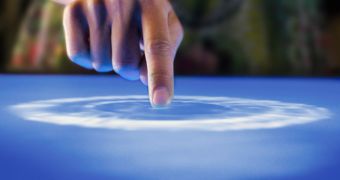Microsoft Surface, the company's first commercial example of surface computing, has “crossed the pond” and is available in no less than 12 markets over the Atlantic. The Redmond company announced at CeBIT 2009 that Surface would be made available in the Europe, Middle East and Africa (EMEA) regions. Until the start of CeBIT 2009 only companies in the United States and Canada were able to purchase Microsoft Surface. Now the tabletop computer will be made available in Austria, Belgium, France, Germany, Ireland, Italy, Netherlands, Qatar, Spain, Sweden, the United Arab Emirates and the U.K.
“Since our initial launch of Microsoft Surface, we’ve received an overwhelming response from companies worldwide that are looking for innovative ways to engage with their customers and developers who want to create applications that were not possible with other technologies,” explained Panos Panay, general manager of Microsoft Surface. “We’re excited to be entering into these new markets with partners that have already begun exploring many possibilities of Microsoft Surface locally.”
Concomitantly with the expansion of the commercial availability of Surface Microsoft indicated that it was also placing a strong focus on extending its developer partner ecosystem in order to embrace the new markets, when it comes down to complementing the tabletop computer with localized content. In this regard, the software giant has welcomed aboard no less than 120 partners from 11 countries in the Microsoft Surface partner program, including companies such as Avanade, EMC Corporation, Infusion Development, InterKnowlogy, IntuiLab, Razorfish, Sariamo, Telefónica I+D, T-Systems Multimedia Solutions and Vectorform.
Microsoft Surface is the first example of the company's exploring the perspective of mainstream Natural User Interfaces that ultimately led up to the development of Windows 7. The surface computing solution based on Windows Vista features multi-user, direct interaction, multi-touch and object recognition capabilities. Surface, just as Windows 7 on top of touch-enabled computers, allows users to interact using touch, gestures and objects rather than the mouse and keyboard.

 14 DAY TRIAL //
14 DAY TRIAL //